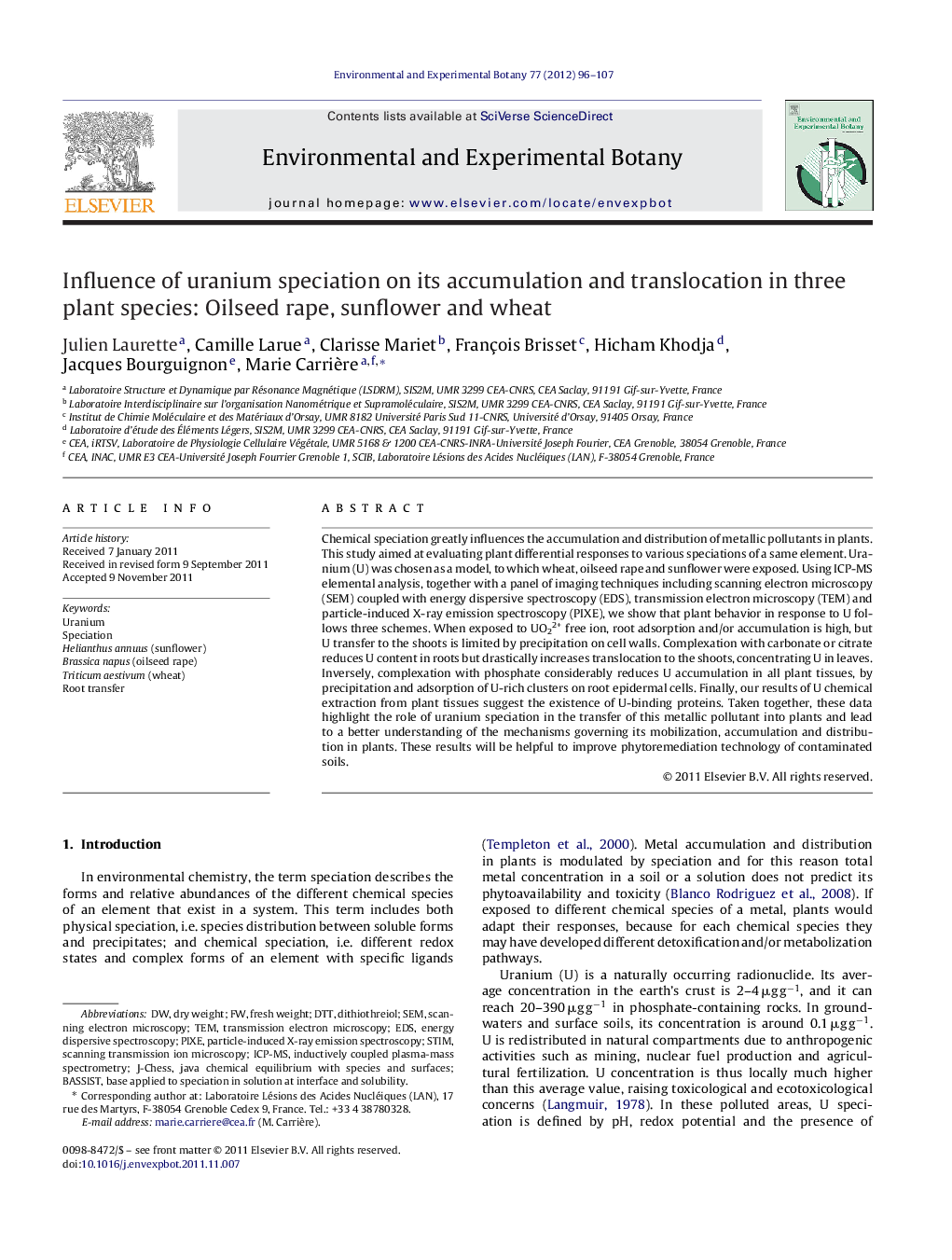| Article ID | Journal | Published Year | Pages | File Type |
|---|---|---|---|---|
| 4554673 | Environmental and Experimental Botany | 2012 | 12 Pages |
Chemical speciation greatly influences the accumulation and distribution of metallic pollutants in plants. This study aimed at evaluating plant differential responses to various speciations of a same element. Uranium (U) was chosen as a model, to which wheat, oilseed rape and sunflower were exposed. Using ICP-MS elemental analysis, together with a panel of imaging techniques including scanning electron microscopy (SEM) coupled with energy dispersive spectroscopy (EDS), transmission electron microscopy (TEM) and particle-induced X-ray emission spectroscopy (PIXE), we show that plant behavior in response to U follows three schemes. When exposed to UO22+ free ion, root adsorption and/or accumulation is high, but U transfer to the shoots is limited by precipitation on cell walls. Complexation with carbonate or citrate reduces U content in roots but drastically increases translocation to the shoots, concentrating U in leaves. Inversely, complexation with phosphate considerably reduces U accumulation in all plant tissues, by precipitation and adsorption of U-rich clusters on root epidermal cells. Finally, our results of U chemical extraction from plant tissues suggest the existence of U-binding proteins. Taken together, these data highlight the role of uranium speciation in the transfer of this metallic pollutant into plants and lead to a better understanding of the mechanisms governing its mobilization, accumulation and distribution in plants. These results will be helpful to improve phytoremediation technology of contaminated soils.
► Plant response to U follows three different schemes according to U speciation. ► Physiological response to U exposure differs from a plant to another. ► Plant tissues contain U-binding proteins.
